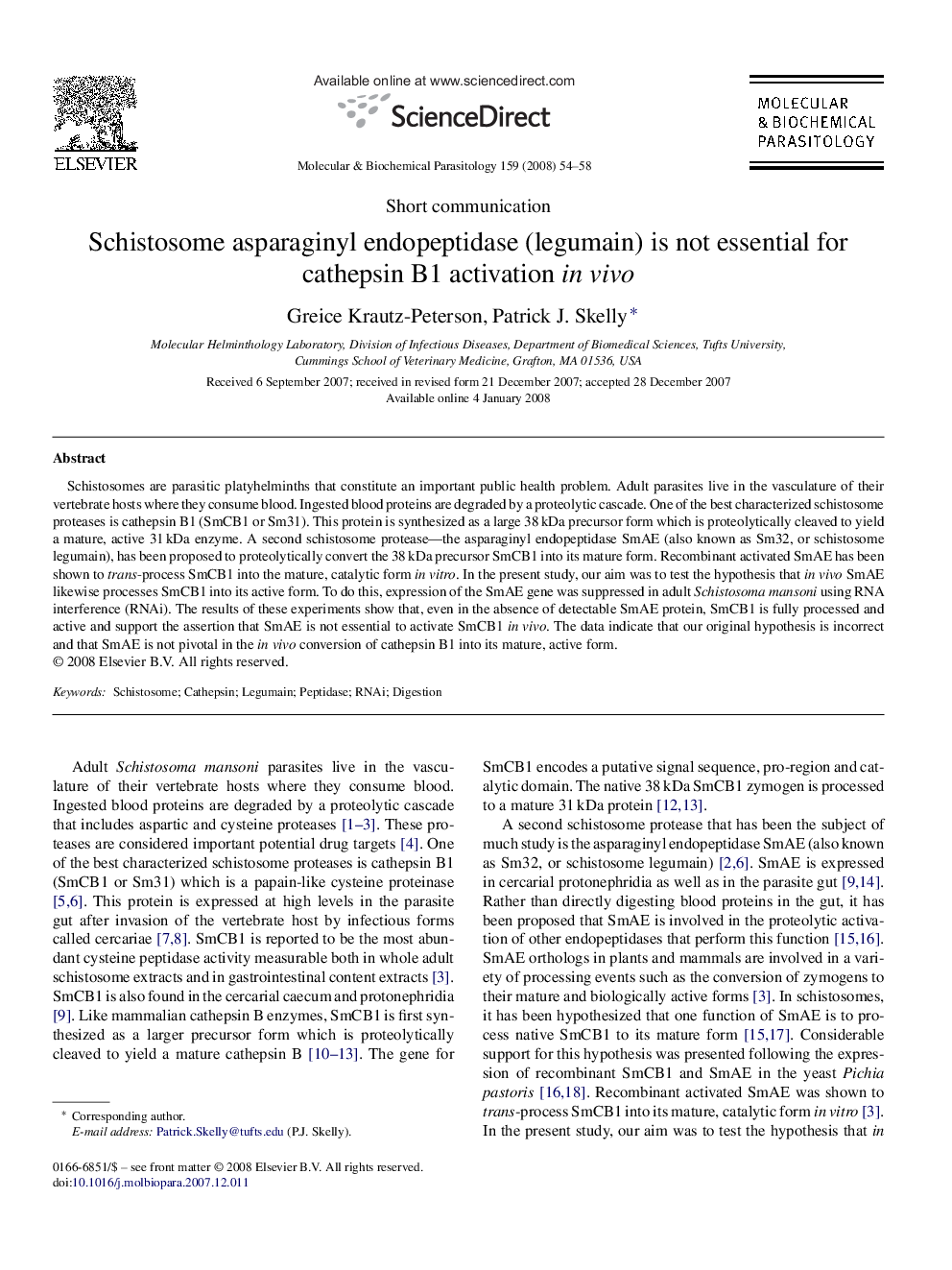| کد مقاله | کد نشریه | سال انتشار | مقاله انگلیسی | نسخه تمام متن |
|---|---|---|---|---|
| 5916062 | 1163362 | 2008 | 5 صفحه PDF | دانلود رایگان |
عنوان انگلیسی مقاله ISI
Schistosome asparaginyl endopeptidase (legumain) is not essential for cathepsin B1 activation in vivo
دانلود مقاله + سفارش ترجمه
دانلود مقاله ISI انگلیسی
رایگان برای ایرانیان
کلمات کلیدی
موضوعات مرتبط
علوم زیستی و بیوفناوری
بیوشیمی، ژنتیک و زیست شناسی مولکولی
زیست شناسی مولکولی
پیش نمایش صفحه اول مقاله

چکیده انگلیسی
Schistosomes are parasitic platyhelminths that constitute an important public health problem. Adult parasites live in the vasculature of their vertebrate hosts where they consume blood. Ingested blood proteins are degraded by a proteolytic cascade. One of the best characterized schistosome proteases is cathepsin B1 (SmCB1 or Sm31). This protein is synthesized as a large 38Â kDa precursor form which is proteolytically cleaved to yield a mature, active 31Â kDa enzyme. A second schistosome protease-the asparaginyl endopeptidase SmAE (also known as Sm32, or schistosome legumain), has been proposed to proteolytically convert the 38Â kDa precursor SmCB1 into its mature form. Recombinant activated SmAE has been shown to trans-process SmCB1 into the mature, catalytic form in vitro. In the present study, our aim was to test the hypothesis that in vivo SmAE likewise processes SmCB1 into its active form. To do this, expression of the SmAE gene was suppressed in adult Schistosoma mansoni using RNA interference (RNAi). The results of these experiments show that, even in the absence of detectable SmAE protein, SmCB1 is fully processed and active and support the assertion that SmAE is not essential to activate SmCB1 in vivo. The data indicate that our original hypothesis is incorrect and that SmAE is not pivotal in the in vivo conversion of cathepsin B1 into its mature, active form.
ناشر
Database: Elsevier - ScienceDirect (ساینس دایرکت)
Journal: Molecular and Biochemical Parasitology - Volume 159, Issue 1, May 2008, Pages 54-58
Journal: Molecular and Biochemical Parasitology - Volume 159, Issue 1, May 2008, Pages 54-58
نویسندگان
Greice Krautz-Peterson, Patrick J. Skelly,